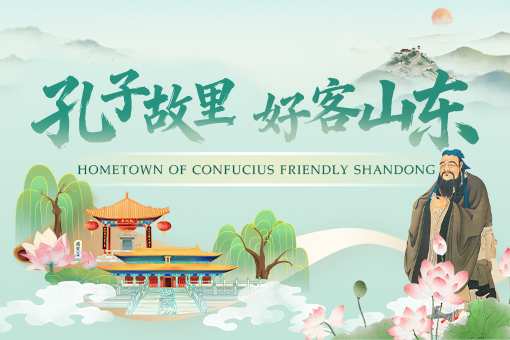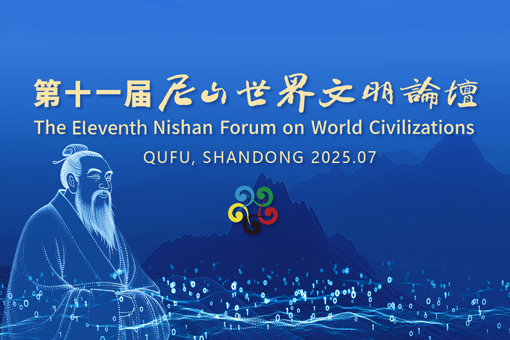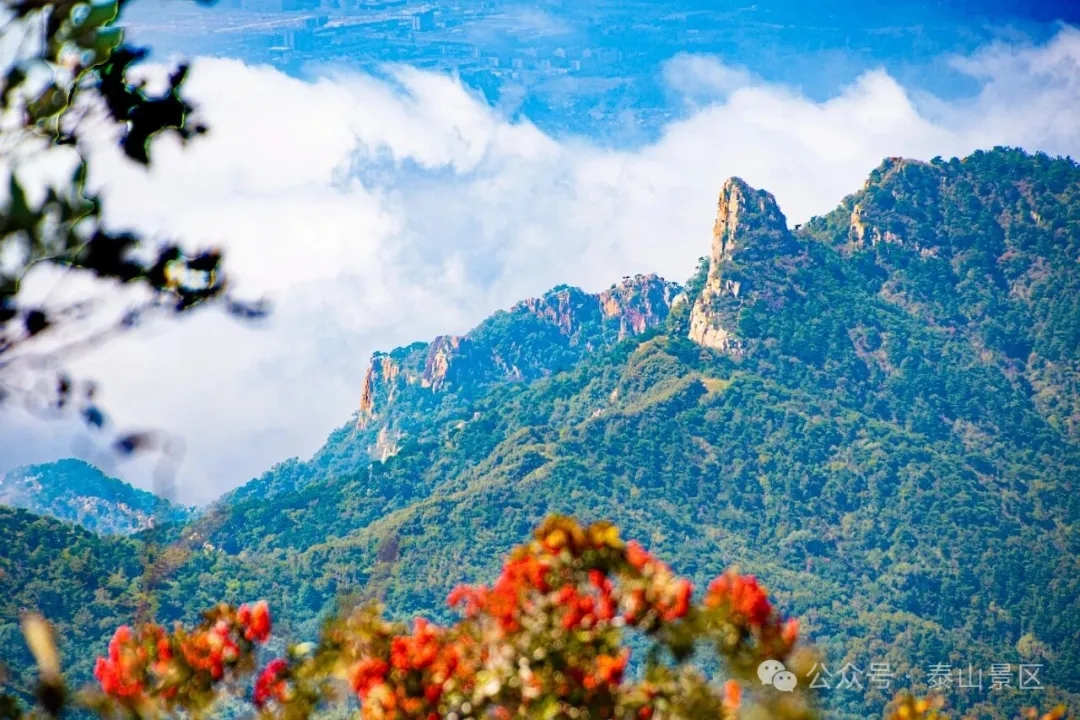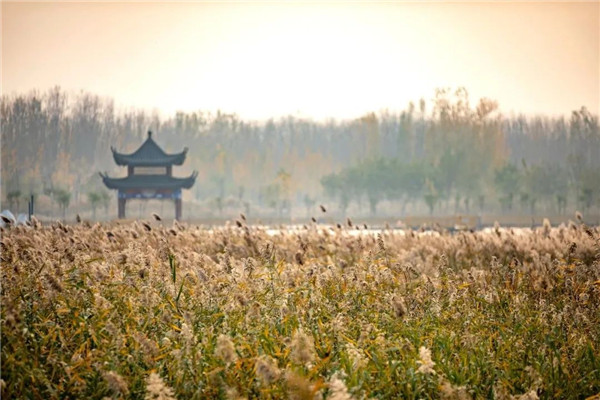Museums key to promoting intl exchanges
Since it opened a special exhibition in September, the Guimet Museum in Paris has drawn throngs of visitors eager to marvel at more than 100 exquisite pieces of Chinese gold artistry, including ornaments, jewelry and decorative objects dating back to the Ming Dynasty (1368-1644).
The items offer a glimpse into the finery of Chinese women from royal families at the time.
Next month, the museum will unveil another exhibition featuring millennia-old antiques that are on loan from Chinese museums. The exhibition, which will feature more than 200 items, will offer a journey to discover the wonders of Chang'an, the bustling capital of the Tang Dynasty (618-907), a vibrant hub where merchants, scholars, musicians, artists and craftsmen from around the world once converged.
Yannick Lintz, president of the Guimet Museum, noted that the facility, which is dedicated to Asian art, has forged extensive collaborations with Chinese institutions this year. In total, the museum will present four exhibitions spotlighting China's rich cultural heritage.
Earlier this year, a show displaying the art and culture of two mysterious states in Central China's Hubei province 2,000 years ago was presented to a US audience at the Asian Art Museum in San Francisco. It was the biggest archaeological show from China since 2020 and received strong support from six key museums in China.
The active collaborations between foreign museums and their Chinese counterparts in recent years can be attributed to President Xi Jinping's frequent promotion of exchanges and mutual learning among civilizations, a key aspect of Xi Jinping Thought on Culture that was put forward at a national meeting on the work of public communication and culture in October last year.
An instruction by Xi, who is also general secretary of the Communist Party of China Central Committee and chairman of the Central Military Commission, was conveyed at the meeting covering seven aspects, including enhancing international communication capacity and promoting exchanges and mutual learning among civilizations.
It was not the first time that Xi emphasized the importance of exchange and mutual learning among civilizations. When he proposed the Global Civilization Initiative at the CPC in Dialogue with World Political Parties High-level Meeting in Beijing in March last year, he called for respect for the diversity of civilizations.
Delivering a keynote address at the meeting, Xi said that countries need to uphold the principles of equality, mutual learning, dialogue and inclusiveness among civilizations, and let cultural exchanges transcend estrangement, mutual learning transcend clashes, and inclusiveness transcend any sense of superiority.
As the future of all countries will be closely connected, tolerance, coexistence, exchanges and mutual learning among different civilizations will play an irreplaceable role in advancing humanity's modernization process and making the garden of world civilizations flourish, Xi said.
Tan Ping, director of Art Exhibitions China, a governmental body that aims to promote Chinese cultural heritage overseas, said that "antiques and cultural heritage are a unique medium and play a key role in enhancing understanding and respect among different civilizations and promoting exchange and mutual learning".
Since its establishment in 1971, Art Exhibitions China has held 240 large-scale Chinese antique shows overseas and introduced 140 foreign shows to China.
The shows outside China reached more than 60 countries and regions across five continents, attracting over 100 million visitors from both home and abroad.
"Cultural relics and heritage are tangible witnesses of history. They show the cultural characteristics, technological levels and lifestyles of a particular historical period in a more intuitive way, which allows audiences to directly experience the unique charm of different civilizations. I see these exhibitions of cultural relics overseas as a 'golden card' and an 'ambassador' for promoting Chinese culture," Tan said.
In addition to taking shows overseas, Tan's team introduced foreign relic exhibitions to China in recent years, showcasing the remarkable achievements of various civilizations. These exhibitions have included relics from Afghanistan, Syria, Italy, Greece, Russia, Kazakhstan and Mexico, all of which received a warm welcome from Chinese audiences.
In July, when the Shanghai Museum opened its largest-ever themed exhibition featuring 788 artifacts from various periods of Egyptian history, visitors had to book tickets a month in advance. People showed a great passion for ancient Egyptian civilization, and related cultural products quickly sold out.
Xi's report to the 20th National Congress of the CPC in 2022 also called for and emphasized cultural exchanges.
In response to the call, cultural forums and activities held in various cities across China have provided excellent platforms for museum directors and cultural relics experts to communicate with one another, fostering future collaborations.
In September, the Beijing Culture Forum gathered hundreds of experts, scholars and museum directors from across the globe to discuss culture-related topics, including how cultural exchanges help improve mutual learning and common progress.
Many museum directors from home and abroad were invited to the forum, at which they met counterparts who could be future partners.
At a museum expo held in August in Hohhot, the capital of the Inner Mongolia autonomous region, Jade Guyard, a sales manager at Museum Connections, said that she had welcomed a group of Chinese museum directors to Paris for a Museum Connections fair in January. These included the heads of the Henan Museum, the Emperor Qinshihuang's Mausoleum Site Museum and the China Grand Canal Museum.
The Chinese museum directors were hoping to show their collections outside China to a wider audience, and their French counterparts were interested in introducing Chinese relics to visitors and presenting their collections to a Chinese audience, Guyard said.
Lintz, the Guimet Museum director, signed cooperation agreements with the Dunhuang Academy, the National Museum of China and the Palace Museum to deepen collaboration in various areas such as exhibition activities, academic research and talent development, when she attended a cultural forum in Hong Kong in March. She said that with collections of different civilizations, museums are important for cultural exchanges.
Her museum's Tang Dynasty show, set to open next month, is co-organized with Art Exhibitions China, which is preparing the loan of items from museums across China. Every year, the institution holds large-scale relics shows in China and abroad.
Tan, the Art Exhibitions China director, said that in more than half a century of cultural relics exhibitions and international exchanges, there has been a significant evolution, from telling China's story to narrating the stories of world civilizations and now to illustrating the exchanges and mutual learning between different cultures.
"This journey marks a transformation from 'Who am I?' to 'The World and I'," he said. "This transformation reflects the confidence and strength of Chinese culture, embodying the vitality and dynamism of China's rich cultural heritage as it flourishes in the new era."
dengzhangyu@chinadaily.com.cn



 Embark on cultural trip in Shandong
Embark on cultural trip in Shandong Global civilizations shine at Nishan in Shandong
Global civilizations shine at Nishan in Shandong Explore Taishan Mountain's autumn splendor
Explore Taishan Mountain's autumn splendor

